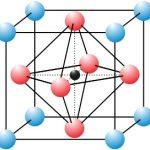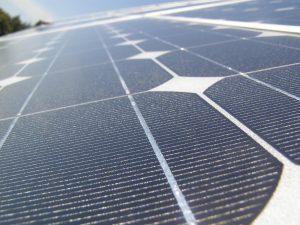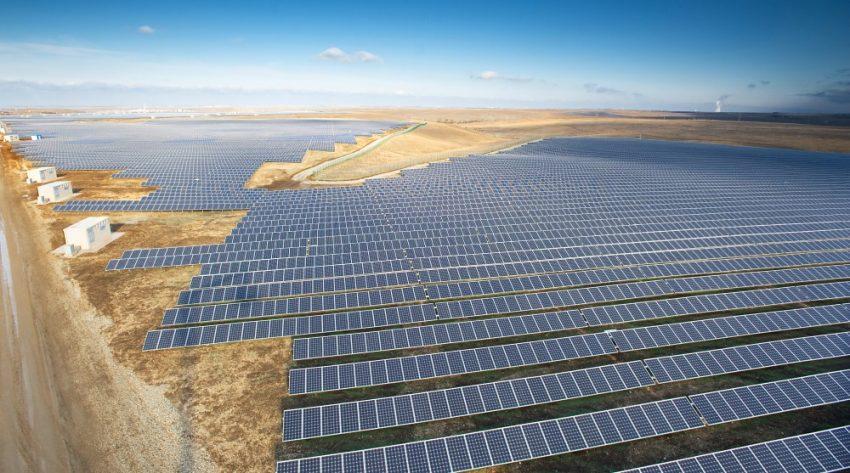Table of Contents
Solar energy is a clean and renewable source of energy that has been gaining popularity in recent years. As the demand for clean energy continues to grow, so does the need for efficient and cost-effective solar panel technology. In this blog post, we will take a look at some of the latest advancements in solar panel technology and how they are shaping the future of energy production.
Perovskite Solar Cells: The Future of Clean Energy?

Perovskite solar cells are a relatively new technology in the solar panel industry, but they have the potential to revolutionize the way we produce clean energy. Perovskite is a mineral that has been found to have high photovoltaic properties, making it an ideal material for solar cells. In recent years, researchers have been working to develop perovskite solar cells with the goal of creating a more efficient and cost-effective alternative to traditional silicon-based solar cells.
One of the key benefits of perovskite solar cells is their high efficiency. In recent studies, perovskite solar cells have been shown to be up to 30% more efficient than traditional silicon-based solar cells (1). This increased efficiency means that perovskite solar cells can generate more energy in a smaller area, making them an attractive option for a wide range of applications, from powering small electronic devices to providing energy for entire buildings.
Another benefit of perovskite solar cells is their low cost. Unlike traditional silicon-based solar cells, perovskite solar cells can be manufactured using a simple and low-cost process, making them a more affordable option for many individuals and organizations.
In addition, perovskite solar cells have a unique ability to absorb light from a wider range of wavelengths, making them well-suited for use in low light conditions. This makes them an ideal solution for areas with limited sunlight, such as northern climates or urban areas with high levels of light pollution.
Perovskite solar cells are a promising technology in the solar panel industry, offering a more efficient and cost-effective solution for energy production. As research in this area continues to advance, we can expect to see further improvements in the performance and efficiency of perovskite solar cells, leading to a more sustainable and energy-efficient future.
Flexible and Transparent Solar Panels: A Game-Changer for Energy Efficiency

Flexible and transparent solar panels are a relatively new technology in the solar panel industry, but they have the potential to be a game-changer for energy efficiency. Unlike traditional rigid solar panels, flexible and transparent panels are made from a thin film of photovoltaic material and can be applied to a variety of surfaces, including windows and flexible plastics. This technology opens up new opportunities for integrating solar panels into buildings and other structures, increasing the overall energy efficiency of these structures.
One of the key benefits of flexible and transparent solar panels is their versatility. They can be molded into a variety of shapes and sizes, making them suitable for a wide range of applications, from powering small electronic devices to providing energy for entire buildings. Additionally, their transparent nature makes them virtually invisible when installed, reducing their impact on the aesthetic appearance of buildings and other structures.
Another benefit of flexible and transparent solar panels is their high efficiency. The thin film of photovoltaic material used in these panels is optimized to absorb light from a wider range of angles, resulting in higher energy production. This makes them a more efficient and cost-effective alternative to traditional rigid solar panels, especially in areas with low light conditions (2).
Flexible and transparent solar panels are a promising technology in the solar panel industry, offering a more versatile and efficient solution for energy production. As the demand for clean and renewable energy continues to grow, we can expect to see further advancements in this technology, leading to a more sustainable and energy-efficient future.
Using Artificial Intelligence to Improve Solar Panel Performance
In addition to these advancements, the use of artificial intelligence and machine learning algorithms is also playing a crucial role in improving the performance and efficiency of solar panels. These algorithms can analyze large amounts of data and identify patterns and trends, allowing for real-time monitoring and optimization of energy production. This has the potential to significantly increase the overall efficiency of solar panels, leading to a more sustainable future (3).
Nanotechnology Takes Solar Panel Efficiency to the Next Level
Another exciting development in the solar panel industry is the use of nanotechnology to improve the efficiency of solar panels. By using nanotechnology to manipulate the surface of solar panels, researchers are able to increase the amount of light that is absorbed and converted into electricity. This has the potential to significantly increase the overall efficiency of solar panels, making them even more cost-effective (4).
The future of solar panel technology is looking bright. With new advancements in perovskite solar cells, flexible and transparent panels, artificial intelligence, and nanotechnology, the industry is poised for significant growth and innovation. As we continue to search for new and innovative ways to produce clean energy, solar panels will play an increasingly important role in shaping our energy future.

What is the new technology for solar panel?
Your’e asking about the latest solar panel technology 2022?
One of the latest advancements in solar panel technology is the use of tandem solar cells. Tandem solar cells are made up of two or more layers of photovoltaic materials, each optimized to absorb different wavelengths of light. This results in higher energy conversion efficiency and improved overall performance. In recent studies, tandem solar cells have been shown to have a maximum theoretical efficiency of over 30%, compared to around 24% for traditional silicon-based solar cells.
Another recent development in the solar panel industry is the integration of storage systems with solar panels. This allows for the storage of excess energy generated during the day for use during periods of low light or at night. This not only increases the overall efficiency of solar panels, but also provides a more reliable source of clean energy, as it reduces the reliance on traditional grid-tied power systems.
In addition, the use of artificial intelligence and machine learning algorithms is becoming increasingly important in the solar panel industry. These algorithms can analyze large amounts of data and identify patterns and trends, allowing for real-time monitoring and optimization of energy production. This has the potential to significantly increase the overall efficiency of solar panels, leading to a more sustainable future.
Overall, the solar panel industry continues to evolve and innovate, with new technologies and advancements being developed each year. As we move towards a more sustainable and energy-efficient future, solar panels will play an increasingly important role in shaping the future of energy production.
Sources:
- https://www.nature.com/articles/s41560-019-0491-9
- https://www.sciencedirect.com/science/article/pii/S0927024819305462
- https://www.sciencedirect.com/science/article/pii/S1364032117301524
- https://www.nature.com/articles/ncomms14063
Some of our other pages you might be interested
Solar Panel Warranty: How to protect Your Investment in Renewable Energy
Compact guide to solar incentives by state in the USA. 6 Opportunities to cut your bill.
Small Solar Panels for homeowners and there balcony
Choosing the Right Wall Solar Panel Mounting System for Your Installation
